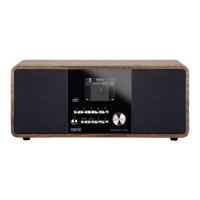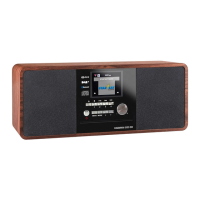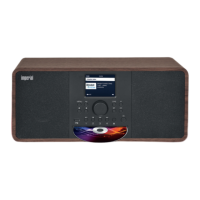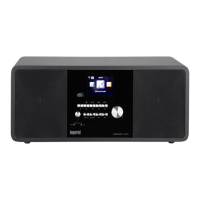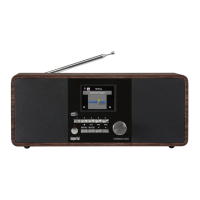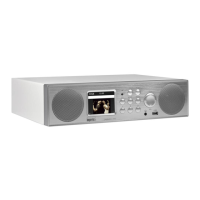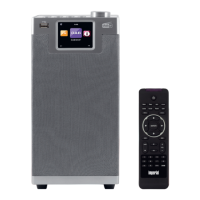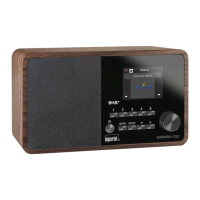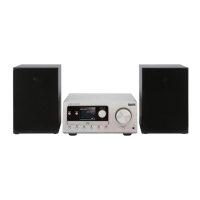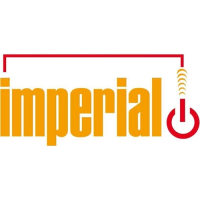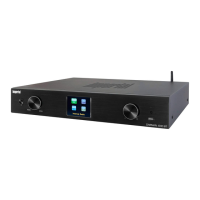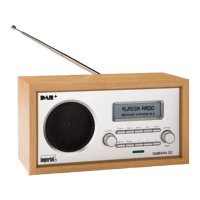Do you have a question about the Imperial DABMAN i205 and is the answer not in the manual?
Explains safety symbols like DANGER, WARNING, ATTENTION, and NOTE used in the manual.
Provides essential safety guidelines regarding device inspection, child safety, and packaging hazards.
Covers safety precautions during device operation, including electrical hazards and maintenance.
Details the correct procedure and safety measures for connecting the device to power outlets.
Advises on preventing device damage from environmental factors, heat, and magnetic fields.
Explains the electromagnetic field generated by the device and its potential impact on medical devices.
Provides critical safety instructions for handling, charging, and disposing of batteries.
Illustrates and explains the device's display screen and its icons.
Details on connecting the power supply unit and plugging it into a power socket.
Explains how to connect the radio to a network via LAN cable or Wi-Fi.
Steps to configure the radio's network connection, including confirmation prompts.
Guide to selecting the network type (LAN or Wi-Fi) and entering Wi-Fi passwords.
Accesses the main settings menu to configure individual device parameters.
Details network requirements for Internet radio, including DHCP and UPnP activation.
Configuration steps for establishing a wired network connection via LAN.
Guidance on enabling Wi-Fi, scanning for networks, and entering passwords.
Enables network connection via WPS push-button configuration for easier setup.
Configuration for setting up the radio as an alarm clock with various sound options.
Information on updating the device's operating software via USB.
Resets all settings to factory defaults, deleting stored stations and configurations.
Guides on selecting and managing Internet radio stations, requiring network connection.
Enables playing music from network devices (UPnP/DLNA) or USB storage.
Covers all settings related to receiving radio stations via FM.
Guides on performing automatic or manual scans to find FM radio stations.
Covers settings and operations for receiving DAB+ digital radio broadcasts.
Explains the automatic station scan process for finding available DAB+ stations.
Information on connecting the device to external devices wirelessly via Bluetooth.
Step-by-step guide to pairing the radio with Bluetooth-enabled devices.
Instructions on how to store and recall preferred radio stations.
| Display type | TFT |
|---|---|
| Built-in display | Yes |
| Display diagonal | 3.2 \ |
| Thermometer | No |
| Antenna type | External |
| Product color | Brown |
| Volume control | Digital |
| Internet radio services supported | Spotify |
| Radio type | Internet |
| Tuner type | Analog & digital |
| FM band range | 87.5 - 108 MHz |
| DAB III band range | 174 - 240 MHz |
| Supported radio bands | DAB, DAB+, FM |
| RMS rated power | 30 W |
| Audio formats supported | MP3 |
| Number of built-in speakers | 2 |
| Bluetooth version | 5.0 |
| Ethernet LAN data rates | 10, 100 Mbit/s |
| Power source | AC |
| AC input voltage | 240 V |
| DC input voltage | 15 V |
| AC input frequency | 60 Hz |
| Headphone outputs | 1 |
| Headphone connectivity | 3.5 mm |
| USB 2.0 ports quantity | USB 2.0 ports have a data transmission speed of 480 Mbps, and are backwards compatible with USB 1.1 ports. You can connect all kinds of peripheral devices to them. |
| Apple docking compatibility | Not supported |
| Number of batteries included | 1 pc(s) |
| Certification | CE |
| Cables included | AUX |
| Depth | 153 mm |
|---|---|
| Width | 366 mm |
| Height | 144 mm |
| Weight | 2600 g |
